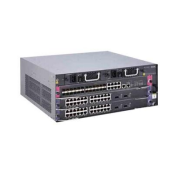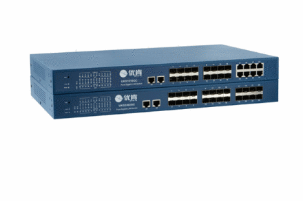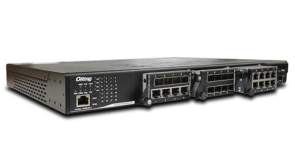There are several types of switches:
Classification according to network coverage
1. LAN Switch

It is used to connect devices within the local area network, such as computers, servers, printers, etc. It works at the data link layer and forwards data frames via MAC addresses. For example, in an office network, employees' office computers are connected to LAN switches through Ethernet interfaces to achieve internal data communication, such as file sharing, printer sharing, etc. The transfer rate is generally 10/100Mbps, 1000Mbps (i.e., 1Gbps), 10Gbps, etc., and the number of ports is also available, ranging from 4 ports to 48 ports.
2. WAN Switch

It is mainly used in a WAN environment to connect different LAN or WAN nodes. The data traffic handled by WAN switches often involves long-distance transmission and communication between different network operators. It supports a variety of WAN interfaces, such as T1/E1, DS3, etc., and can achieve efficient forwarding and routing of data in a wide area, so that networks distributed in different geographical locations can communicate with each other. However, with the development of technology, many WAN functions can now be realized through routers and other devices combined with software, and the use scenarios of WAN switches are relatively narrow.
Classification according to transmission medium and interface type
1. Ethernet Switch

This is the most common type of switch, and its interface is mainly an Ethernet interface (RJ-45 interface) for transmitting Ethernet frames. Ethernet switches support a variety of Ethernet standards, such as 10BASE-T, 100BASE-TX, 1000BASE-T, etc., corresponding to different transmission rates. Widely used in home networks and enterprise office networks, for example, wireless routers in the home often have built-in Ethernet switch functionality to connect multiple wired devices, such as desktop computers, smart TVs, etc.
2. Fibre Channel Switch

It is mainly used in high-speed data transmission and storage area networks (SANs). It uses optical fiber as the transmission medium to connect devices through optical fiber interfaces such as LC, SC, etc. Fiber switches can provide extremely high bandwidth, such as 8Gbps, 16Gbps, 32Gbps and other transmission rates, and are suitable for scenarios that require high data transmission speed and reliability, such as the connection between servers and storage devices in large data centers, to ensure the fast read, write and transmission of large amounts of data (such as database data and video materials).
3. Token - Ring Switch

This type of switch is used in Token Ring networks, which control network access in the same way that tokens are passed. In a Token Ring network, a special frame called a "token" is cycled between network nodes, and only the node that owns the token can send data. However, with the rapid development and widespread adoption of Ethernet technology, Token Ring networks and Token Ring switches are now rarely used.
Classification by work agreement layer
1. Layer 2 Switch
Also known as a data link layer switch, it mainly forwards data frames based on MAC addresses. It learns the MAC address of the device connected to the port and establishes a MAC address table. When a dataframe is received, it looks at the destination MAC address and forwards the dataframe to the appropriate port according to the MAC address table. For example, in a simple small office network, a Layer 2 switch can effectively isolate network conflict domains and improve the efficiency of the network.
2. Layer 3 Switch
Layer 3 switches add the functions of the network layer (IP layer) to the functions of the layer 2 switches. It is capable of IP routing, which forwards packets based on IP addresses. In large enterprise networks, Layer 3 switches can replace some of the routers' capabilities to enable communication between different VLANs (virtual local area networks) while also having higher forwarding speeds than traditional routers because they use hardware acceleration technology to process IP packets.
3. Layer 4 Switch
Working at the transport layer, it can forward data based on transport layer information such as TCP or UDP port numbers. The switch is able to recognize the port number used by different application-layer protocols (e.g., HTTP, FTP, etc.) for more granular control and load balancing of traffic. For example, in a server cluster environment, Layer 4 switches can allocate requests to the most appropriate server based on the type of service requested by the client, such as a web service or file transfer service, to optimize the utilization of network resources and the quality of service.


